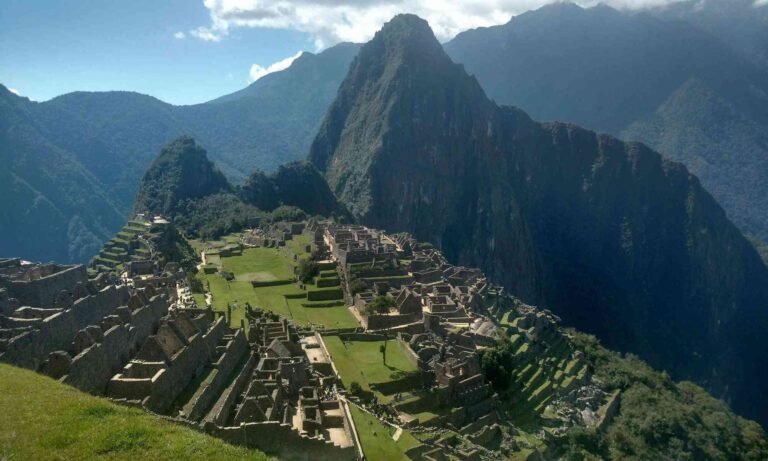Mandalas, derived from the Sanskrit word for “circle,” represent a fascinating intersection of art, spirituality, and culture. Historically, they have played a pivotal role in Hinduism and Buddhism, serving as symbolic representations of the cosmos and embodying the universe’s unity and balance. Their circular design reflects the idea of wholeness, demonstrating how all elements of life are interconnected.
- In Hinduism, mandalas are employed in rituals and temple construction, with the intention of facilitating a deeper spiritual connection. They often signify the sacred journey one undertakes during meditation, guiding practitioners toward self-discovery and enlightenment.
- Similarly, in Buddhism, mandalas are used as tools for meditation, helping practitioners focus their minds and gain insights into their own consciousness. The mandala appears during sand painting rituals, where monks spend days creating a colorful representation that is later destroyed to symbolize the impermanence of life.
Over time, the concept of mandalas has transcended its traditional religious confines. In modern contexts, artists and therapists have adopted this ancient practice, using mandalas as a method of self-expression, creativity, and personal growth. The act of creating or coloring mandalas can serve as a meditative practice, reduced stress, and promotes mental clarity. They have been integrated into various therapeutic settings, illustrating their adaptability and relevance in contemporary society.
As we delve deeper into the world of mandalas, it becomes evident that their significance extends beyond mere aesthetics. They embody a rich tapestry of history and meaning, serving as powerful tools for meditation and self-reflection. Understanding their origins and uses sets the stage for appreciating their cultural significance and mental benefits in our fast-paced modern lives.
“Each person’s life is like a mandala – a vast, limitless circle. We stand in the center of our own circle, and everything we see, hear and think forms the mandala of our life.”
– Pema Chödrön
The Cultural Significance
Mandalas hold a prominent place in various cultures worldwide, serving as intricate representations of the cosmos and life itself. Their unique designs, which can range from geometric patterns to natural forms, reflect cultural values and spiritual beliefs. In Hinduism and Buddhism, for instance, mandalas are used as spiritual symbols that facilitate meditation and connect practitioners to their deities. They are often seen as tools for personal transformation and enlightenment, embodying concepts of wholeness and unity.
In Native American traditions, mandalas manifest as intricate sand paintings and other art forms. These designs are often created as part of healing ceremonies or rituals, symbolizing the harmony between the individual and the universe. The colors, shapes, and patterns in these mandalas are laden with meaning, representing various elements such as earth, wind, fire, and water. The process of creating a mandala in this context is as significant as the final product, reinforcing the importance of community and connection.
Celtic culture also embraces mandalas, which are visible in the form of knotwork and circular patterns found in ancient manuscripts and stone carvings. These designs reflect the Celts’ deep respect for nature and the cycles of life. The motifs often interweave elements from the natural world, conveying the interconnectedness of all beings. Such representations reinforce a worldview that emphasizes unity and the continuous flow of life, mirroring the themes found in mandala symbolism across various cultures.
Through their diverse forms and uses, mandalas encapsulate the spiritual journey of individuals and communities. They are more than artistic expressions; they serve as a reminder of the larger patterns that connect all life. As we explore the cultural significance of mandalas, it becomes evident that they act as a bridge between personal experience and collective consciousness, highlighting the universal quest for understanding and integration in the fabric of existence.
Tibetan Sand Painting
Tibetan sand painting, commonly referred to as Mandala art, is a revered form of artistic expression deeply entwined with Tibetan Buddhism. This intricate art form serves not only as a means of visual representation but also as a spiritual tool integral to ritual practices and meditation. Mandalas are typically created during sacred rituals, embodying a profound significance as they symbolize the universe, the cycle of life, and spiritual harmony.
The creation of a sand painting is a meticulous process that requires the artist to utilize colored sands to produce elaborate and vibrant designs.
Traditionally, this involves the use of various natural materials, such as colored powders derived from crushed minerals, flowers, and other organic substances. The meticulous application of these materials is executed using a special tool known as a “chak-pur,” which allows artists to control the sand’s flow with precision. This level of detail not only showcases the artist’s skill but also contributes to the overall spiritual importance of the Mandala.
In the Tibetan Buddhist context, sand painting is more than an art form; it is a meditative practice aimed at promoting mindfulness and compassion. The process of creating a Mandala is often considered a form of meditation itself, where artists channel their focus and intentions into the artwork. Once completed, the sand painting serves a dual purpose: it acts as a visual representation of sacred teachings and is utilized in rituals to aid in the spiritual journey of practitioners.
In conclusion, Tibetan sand painting, or Mandala art, encapsulates a rich cultural heritage that emphasizes the interconnectedness of creativity and spirituality within Tibetan Buddhism. Through understanding its significance, materials, and techniques, one gains deeper insights into this ancient practice that has continued to resonate with followers throughout the ages.
The Process of Creating a Sand Mandala
Creating a Tibetan sand mandala is an intricate and sacred process, steeped in ritual and spirituality. The initial step involves the careful selection of colors, where each hue holds symbolic significance. A wide variety of colored sands are chosen, reflecting the messages and themes intended to be represented in the mandala, ranging from peace and harmony to compassion and wisdom.
Once the colors are prepared, the workspace must be meticulously arranged. Traditionally, sand mandalas are constructed on a flat, clean surface that allows for open movement and airflow. The aids used in the process, such as a grounding chalk outline, are drawn to reference the mandala’s design, ensuring precision in the final piece. This meticulous preparation fosters an environment conducive to focus and meditation.
The technique of applying colored sand is both delicate and precise. Monks and artisans utilize a unique tool called a chakpur, which enables them to pour the sand in fine, controlled streams. This meticulous application requires a high level of concentration, as the intricate designs of the mandala gradually take shape through layers of colored sand. Each grain symbolizes a part of the universe, and the process thus becomes a meditation on the impermanence of life, mirroring the Buddhist belief of transience.
Collaboration is another fundamental aspect of this artistic practice. Typically performed by a group of monks, the creation of a sand mandala is both a communal and spiritual endeavor. Each participant contributes their skill and focus, enhancing the overall energy of the artwork. The atmosphere buzzes with tranquility and respect as they work harmoniously, channeling their intent into the mandala. This collaborative spirit underscores the meditative nature of the process, allowing the monks to deepen their spiritual practice while creating a work of profound beauty.
The Impermanence of Sand Mandalas
Tibetan sand painting, most notably embodied in the creation of mandalas, serves as a profound expression of the Buddhist philosophy of impermanence. This concept underlines that all things, including life itself, are transient and subject to change. The meticulous process of crafting a sand mandala requires immense dedication and precision; artisans spend days or even weeks creating intricate patterns using colored sand. However, upon completion, a poignant tradition unfolds— the mandala is deliberately destroyed, an act that reinforces the understanding that nothing is permanent. This ritual holds deep significance, highlighting the delicate balance between creation and destruction.
The destruction of the sand mandala is not merely an act of loss; it symbolizes the relinquishment of attachment to material forms. By disassembling their intricate work, practitioners embody the essence of Buddhist teachings that advocate for detachment from worldly desires. This ritual encourages both creators and observers to recognize the ephemeral nature of beauty and existence. As a viewer witnesses the mandala’s transformation from a masterpiece to mere grains of sand, they are reminded of the inevitability of change and the importance of living in the moment. This practice fosters a deeper understanding of life’s fluidity and helps cultivate a sense of acceptance regarding loss and change.
Furthermore, the act of dismantling the mandala demonstrates a profound respect for the journey rather than the destination. This ritualistic destruction can lead to spiritual insights, evoking reflections on personal struggles with attachment. The transient experience of the sand mandala becomes a powerful metaphor for the impermanence of life itself, urging observers to appreciate each moment fully while acknowledging that all things must pass. Ultimately, Tibetan sand painting, particularly through the lens of the mandala, offers invaluable lessons on life’s impermanence, urging a mindful approach toward existence and relationships.
The Mental Benefits
Engaging with mandalas offers psychological and emotional benefits, recognized in art therapy and wellness practices. One significant benefit is stress reduction. The intricate patterns help focus attention, creating a meditative state that eases anxiety and promotes relaxation. Coloring or creating mandalas distracts the mind from daily stressors, channeling emotions into a constructive outlet.
Furthermore, working with mandalas enhances focus and concentration. The repetitive nature of coloring or drawing mandalas demands attention to detail, which can help improve overall cognitive function. Engaging in this process requires mindfulness, as individuals must immerse themselves in the present moment, leading to a heightened sense of awareness. Research supports these claims, illustrating that individuals who practice mindfulness while engaging in creative tasks, such as mandala art, experience greater emotional well-being and mental clarity.
Additionally, mandalas serve as powerful tools for self-expression. Creating art can provide insights into one’s feelings, thoughts, and aspirations. In this sense, it acts as a therapeutic medium, allowing individuals to externalize their internal experiences. Many psychologists incorporate mandalas into therapeutic settings, observing valuable results in clients’ mental health and emotional processing. These benefits are especially significant for those dealing with trauma, anxiety, or depression.
To incorporate mandalas into daily practices, individuals can start by setting aside a dedicated time for creative expression, whether through coloring pre-made mandalas or designing their own. Practicing in a tranquil environment can enhance focus and relaxation. By integrating mandalas into routine mindfulness practices, individuals can cultivate a greater sense of peace and emotional well-being, leading to lasting mental health benefits.
“When there is no more separation between “this” and “that” it is called the still-point of Tao, at the still point in the center of the circle, one sees the infinite in all things.”
– Zhuang Zhou
The Tips and Techniques
Diving into the world of mandalas can be a fulfilling and enriching experience, whether approached as a creative outlet or a means for meditation. To begin this journey, one must first gather the necessary materials. Basic supplies typically include high-quality drawing paper, colored pencils, markers, or even watercolor paints. These tools allow for intricate designs and vibrant colors, enhancing the aesthetic appeal of the final creation. For beginners, it can be helpful to start with pre-printed mandala templates available in books or online, as they provide a structured starting point.
When drawing or coloring mandalas, there are several techniques to consider. Visitors to the mandala realm can explore geometric patterns, floral designs, or even abstract representations. Focusing on symmetry is essential, as it plays a vital role in mandala creation and contributes to the meditative aspects of this practice. To cultivate mindfulness during the process, one should approach the creation of mandalas slowly, allowing for immersion in both the activity and one’s thoughts.
Inspiration can come from many sources; nature provides patterns and colors often seen in mandala art. Engaging with art communities, both in person and online, offers motivation and fresh ideas. Participating in mandala workshops or classes allows for the exchange of techniques and experiences, fostering a deeper connection with others exploring this art form.
For those seeking to expand their knowledge, numerous resources exist, including books focusing on mandala art and its history, as well as online platforms hosting tutorials. Websites and social media groups dedicated to mandala creation offer a sense of community and camaraderie, where enthusiasts can share their work and progress. As you embark on your own mandala journey, allow your creativity to flow freely while embracing the mental benefits that come with each stroke of color.
What’s More
The posts in My Blog feature reflective, story-driven pieces rooted in personal and societal insights.
The topics in My Interests explore abstract, philosophical ideas and their cultural and societal impact.
















